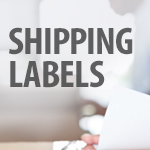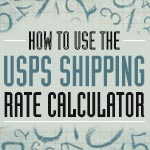 There’s no such thing as a free lunch, and that goes double for the concept of free shipping. Still, small businesses like yours—and plenty of big names as well!—dangle free shipping offers to get attention, differentiate themselves from competitors and create customer loyalty.
There’s no such thing as a free lunch, and that goes double for the concept of free shipping. Still, small businesses like yours—and plenty of big names as well!—dangle free shipping offers to get attention, differentiate themselves from competitors and create customer loyalty.
For many, it’s a tactic that works. Is the right choice for your ecommerce site? Offered with forethought and consideration for your bottom line, free shipping may give your business that boost you crave.
Statistics Show Customers Want Free Shipping
Hungry for that free lunch? Here’s some food for thought: A 2010 comScore survey indicated that free shipping was the most effective promotion to boost sales during the Q4 period. By offering free shipping, customers’ average order values increased by at least $7—extra funds that can potentially help your bottom line!
So how do you figure out if the benefits of free shipping outweigh the risks? Shippers require payment no matter what, so those funds need to come from somewhere—your pocket or your customers’. Here are some example to help you crunch the numbers.
Crunching the Numbers—Free Shipping Cost Analysis
The first step is to take a close look at the value of your product. For example, how much did it cost you to produce the product, or what did it cost for you to purchase it wholesale? Work with these numbers for a general feel of how much you’ve invested. Then consider the fees assessed by credit card processing and your shopping cart software. With all card companies exacting a cut of your purchase price, it’s important to know exactly how much of your profits will go to these often necessary services.
When your item is ready for shipment, you’re faced with packaging and handling. What are your costs to get your package out the door? Can you use free materials provided by the shipper, reuse items from your own stash—or will you need to purchase study boxes or envelopes? Don’t forget about about necessities such as labels, adhesives and protective measures for your products.
Let’s look at how free shipping impacts your bottom line with an example. Say you’re selling a child’s wool coat; a breakdown on your costs may look like this:
|
Child’s Wool Coat |
|
|
Revenue |
Costs |
| Retail product price: $34.99 | Wholesale product cost: $15.00 |
| Flat rate shipping revenue: $11.00 | Shipping—carrier costs (1 pound): $10.85 |
| Total revenue from customer: $45.99 | Shipping—packaging (box/tape): $0.70 |
| Credit card & shopping cart costs: $0.88 | |
| Total seller cost of the coat: $27.43 | |
|
Profit from this sale: $18.56
|
|
And if you sell 10 coats? Your profit would total $185.60. Nice!
If you wanted to offer free shipping, you would likely need to increase sales to make up for the lost revenue from shipping. Can you do it? Let’s try it with the coat example from above.
|
Child’s Wool Coat |
|
|
Revenue |
Costs |
| Retail product price: $34.99 | Wholesale product cost: $15.00 |
| Flat rate shipping revenue: FREE | Shipping—carrier costs (1 pound): $10.85 |
| Total revenue from customer: $34.99 | Shipping—packaging (box/tape): $0.70 |
| Credit card & shopping cart costs: $0.88 | |
| Total seller cost: $27.43 | |
|
Profit from this sale: $7.56 Profit from 10 sales: $75.60 Profit from 14 sales: $105.84 Profit from 18 sales: $136.08
|
|
Not bad, but not as attractive as the first example.
But … if you raised your price by just a bit—say, $5—you’d be breaking even faster. Let’s look at the numbers again.
|
Child’s Wool Coat |
|
|
Revenue
|
Costs
|
| Retail product price: $39.99 | Wholesale product cost: $15.00 |
| Flat rate shipping revenue: FREE | Shipping—carrier costs (1 pound): $10.85 |
| Total revenue from customer: $39.99 | Shipping—packaging (box/tape): $0.70 |
| Credit card & shopping cart costs: $0.88 | |
| Total seller cost: $27.43 | |
|
Profit from this sale: $12.56 Profit from 10 sales: $125.60 Profit from 14 sales: $175.84 Profit from 18 sales: $226.08
|
|
Nice-looking numbers, aren’t they? Factor in the potential for increased sales volume with your free shipping offer, and those nice numbers could start looking better and better.
(Note: For the sake of simplicity, marketing costs were not provided in the example above, but keep in mind that this is a necessary expense for every small business, including eBay stores).
The Final Countdown
If you’ve followed the steps outlined above, you’ve just tallied the actual costs of your product, packaging and shipping. Take that figure and subtract it from your desired price point, as if you’re offering free shipping.
Does the final number show that you’ve made money on your product? If you aren’t happy with the result, consider how much would you need to bump up your price to make the numbers sing. If you did raise the price, would your item still be priced reasonably? Remember, even a free-shipping offer won’t cause customers to pull that trigger finger if the price tag doesn’t represent good value for the merchandise. Will your buyers balk at paying $39.99 for the wool coat you’re offering? What price, plus free shipping, would make the endeavor worth your time and energy? What’s the competition doing? What would you pay?
Considering Your Options
Free shipping is a draw, and it can be an effective way to sweeten an offer or get your wares noticed in the marketplace. Ultimately, only you can determine if it’s the right decision for your business. If the numbers don’t work for you now, reevaluate after a few weeks or months. Remember, everyone likes the feeling of getting something for nothing, and as the seller, you enjoy giving your customers what they want.
If you don’t feel that raising your prices to absorb free shipping is the right step, look at alternatives. Your version of “free” may come in a different form, such as a membership system for loyal customers or with a minimum order requirement, which has the extra benefit of boosting your merchandise sales. You can also use the calculations described above to determine a flat-rate shipping price, which relieves many potential customers from the pressure of playing the numbers game themselves.
Free shipping may not be free—but to some retailers, it can be worth its weight in sales volume and consumer perception. Watch the competition, listen to your buyers and remember your costs. There’s no such thing as a free lunch … but zeroing on the right offer keeps buyers and sellers satisfied.






